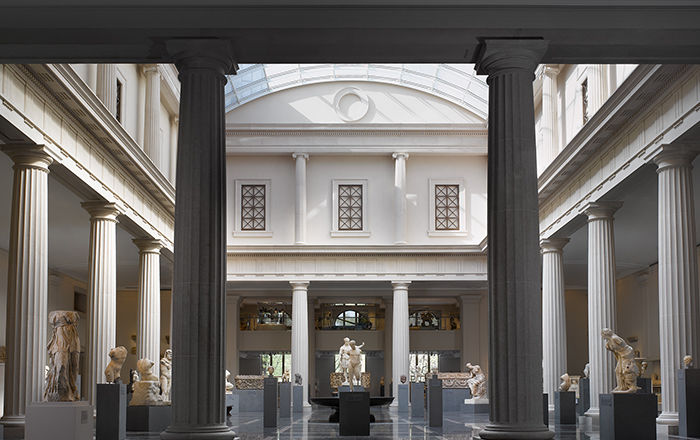Glass two-handled flask
Translucent pale blue green; handles and trails in translucent streaky light blue.
Rounded, slightly thickened rim; broad, funnel-shaped mouth; cylindrical neck, expanding downwards and joining imperceptibly with sloping shoulder; tall, slender body, tapering downwards and then slightly splayed towards base; thick bottom with off-center kick on interior and pontil scar; two rod handles attached as claw pads to edge of shoulder, drawn up and outwards, then turned in and trailed off at rim.
Trail wound twice around underside of mouth; another thinner trail wound horizontally around neck; on body, thirty-two fine vertical ribs with rounded tops, extending from shoulder to splaying above base.
Intact; few bubbles in body, but many elongated bubbles and some black impurities in handles; little weathering on exterior, soil encrustation on interior.
The flask is a typical example of the attractive glassware that was often placed in tombs. Some ancient glass vessels that were buried in hot, dry areas such as the Middle East and Egypt are remarkably well preserved. They retain their original transparency and vibrant color, untouched by the ravages of time.
